The Best Ways To Prevent Running Out Of Heating Fuel This Winter

If you use heating oil or propane for home heating, one of the biggest challenges you will have during the winter is checking the status of your fuel. Home heating oil is a crucial part of your home. Unfortunately, many homeowners still fail to remember this important system and forget to schedule a heating fuel delivery on time.
Oil tanks tend to be forgotten in the busyness the winter season brings. People have to deal with snow, plan family outings, and more. This time of the year also brings in some of the harshest weather, so having a full oil tank is vital. Unfortunately, even highly responsible people may find their tanks empty during the cold season when they need them the most.
Several reasons can contribute to running out of fuel, including failing to monitor your oil levels year-round. It can also be caused by a leak in the tank system, or you may not have enough funds to schedule a fuel oil delivery. Your fuel may have also been stolen.
No matter the reason, an empty fuel oil tank can be frustrating and can significantly impact your health and daily operations. However, preventing this from happening shouldn’t be a nightmare. You can make sure that your tank remains full throughout the year when you understand the risks of running out of fuel and taking simple steps to prevent an empty tank.
Why You Should Avoid Running Out of Heating Oil
Contents
- Why You Should Avoid Running Out of Heating Oil
- Ways to Prevent Running out of Oil
- Call R.F. Ohl For Fast & Affordable Heating Oil Deliveries
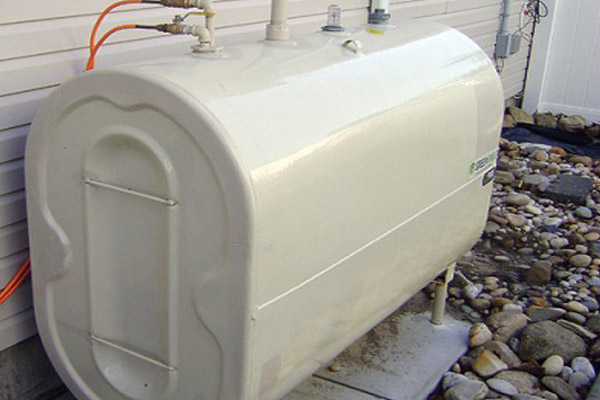
It may not seem like a big deal to you that your home does not have any preventative measures in place, especially if running out of heating fuel oil hasn’t happened to you before. Even highly responsible homeowners sometimes forget to order their next delivery on time. This issue brings more harm than it may seem at the onset.
Several concerns make buying oil promptly a necessity. Aside from having a cold home with no hot water, other inconveniences and risks that may happen if no preventive measures to keep your home oil tank from running out of fuel include the following:
Added Fuel Oil Expenses
The middle or end of winter is usually when homeowners run out of heating oil. The bad news is that this is also when heating oil prices are at their peak. You may end up paying the highest heating oil prices when you run out between October and March. This can add up to a significant amount of dollars.
Aside from paying more for the oil, you also need to spend a lot more on an emergency delivery compared to a regular fill-up. Small fill-ups made across the year will cost significantly less than an emergency service.
Heating Oil Tank Sludge Buildup
You can usually find sludge and debris at the base of your heating oil tank. They do not usually damage your system unless you have an empty tank.
Low oil levels result in the sludge being pulled into the supply lines with the oil. This can cause a clog in the line. If it doesn’t, the sludge travels to a filter that can become blocked partly or wholly. Clogged fuel lines or filters will reduce your furnace or boiler’s efficiency. These problems can also cause your system to shut down completely, requiring professional assistance to resolve them.
Manual Heating System Reset
There are times when resetting your heating oil system after running out of oil is as simple as pressing a button. However, you may require a pilot light reset if this goes off.
It is mandated by law that a pilot light reset should be done by a professional. They will bleed the oil line and replace clogged filters, which can cost hundreds more than a regular fill-up.
Ways to Prevent Running out of Oil
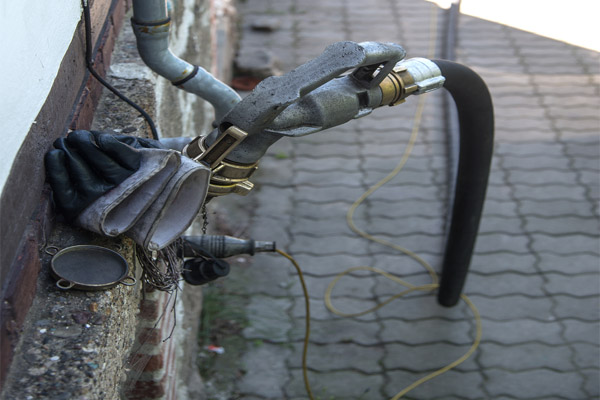
Do not wait to ensure your protection, as many risks come with running out of heating oil. Manage your home and heating needs. Do the necessary preventative methods to ensure there is oil in your tank year-round.
The industry’s general rule is that the oil tank should be kept at 1/4 full all the time. This shouldn’t be equated to you manually checking your oil tank levels. Many services and technologies are available so you can prevent running out of oil without having to walk back and forth to your tank constantly.
Automatic Heating Oil Delivery
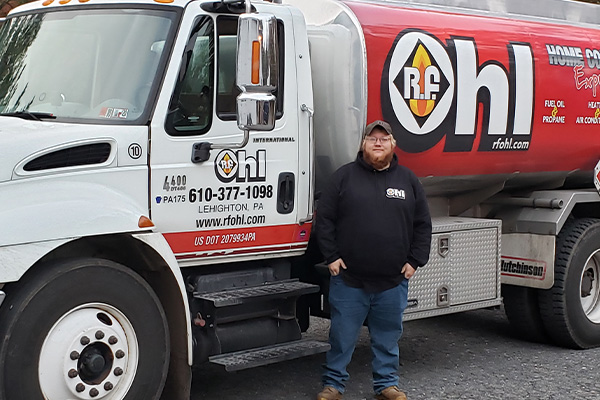
Automatic delivery services mean you won’t run out of oil again. The best part of this service is that you don’t need to make any effort. You don’t have to check your tank and calculate when you need a refill. Signing up for an automatic delivery program means your oil company will take care of everything for you.
Enrolling in automatic delivery means your oil usage will be tracked using non-invasive technology. This allows your oil provider to measure your approximate heating oil use. They also use basic information about your home and family and combine it with the calculated heating degree days. The HDD measures the amount of energy needed for home heating based on the temperature outside.
Your oil supplier calculates the HDD using the size of your tank, the past data regarding your heating requirements, and the square footage of your home. This allows them to accurately pinpoint when your tank will be 1/4 full. They will then contact you directly to book a delivery.
Pros of Automatic Delivery
- Automatic delivery is the most common delivery method for many heating oil companies. It also has a high success rate in keeping fuel tanks from running out of oil.
- Automatic delivery saves you the most money than any other preventative method. Most suppliers give rewards to customers for enrolling in their automatic delivery services. They usually offer discounted oil prices, which can add up to a significant amount.
- The system uses your past heating data and delivers oil to you based on your home’s unique requirements. Therefore, you will only receive the oil you want and need.
- Automatic delivery uses non-intrusive calculation methods. This way, you don’t have to worry about invasive monitoring software in your tank.
Related Article: The Advantages Of Ultra-Low Sulfur Heating Oil
Cons of Automatic Delivery
- This delivery service does not factor in any unexpected increases in your heating needs. For instance, relatives may be visiting you for an extended period, and they will use a lot of hot water.
- You need to call your oil supplier to inform them of any changes so they can adjust your delivery schedule.
- You will have to commit to a single oil provider for a certain period to get the most accurate results. Therefore, you cannot shop around for different oil costs at this time.
Tank Monitoring Apps and Smart Meters

Smart technology is present in nearly all industries, including smart security systems, cookware, and garbage bins. Almost all parts of your home have technologically advanced options. The heating oil industry has also made use of this technology with the launch of smart oil tank meters.
Smart software allows you to instantly monitor your home’s oil levels, heating costs, and consumption from the comfort of your living room or a thousand miles away. This tracking system has a sensor attached to your tank, which sends the data to your phone or laptop.
Pros of Smart Meters
- Many systems have built-in alarms, so you are alerted of potential oil theft.
- Most smart systems notify you immediately when you have a low oil level, so you have ample time to inform your provider.
Cons of Smart Meters
- Smart meters are at the expensive end of all the oil tracking alternatives available. You usually have to shell out around $100 or more for a smart tank monitoring system.
- Reports regarding smart monitoring software errors have gained media attention. The media described these rare circumstances wherein electricity monitoring systems have up to 50% inaccuracy. These rare cases should still be accounted for, although most smart oil monitoring software users find the system accurate.
- Most smart meters only alert the homeowner, not the provider, that there are low oil levels. You still have to contact your oil supplier immediately so you do not run out of oil.
Installing a smart meter should never be a do-it-yourself project. It needs to be done by a professional HVAC technician. R.F. Ohl can assist you in installing these meters during your annual heating system tune-up schedule. If you haven’t had your oil heating system maintained yet, make sure to call us today.
Local Tank Monitors
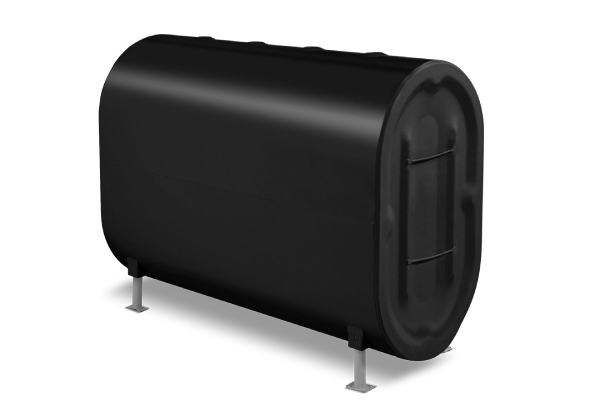 If you wish to check the level of oil in your tank from inside your home but don’t have a smartphone or a similar device to connect to a smart meter, consider using a local tank monitoring software instead.
If you wish to check the level of oil in your tank from inside your home but don’t have a smartphone or a similar device to connect to a smart meter, consider using a local tank monitoring software instead.
They work similarly to smart meters because they have a transmitter that is easy to attach to your tank. It features a sensor that sends the data you need to a monitor, which is usually plugged into an outlet in your home.
Pros of Local Tank Monitors
- Most monitors have quick installation processes. The sensor only needs to be placed in the tank, and the monitor plugged into an electric socket. If you do not use a smartphone, you can still enjoy the advantages a tank read-out system brings with ease.
- The system alerts you when there are low oil levels via the monitor. Therefore, you don’t need to guess when to call your oil delivery company.
- Local tank monitors offer higher accuracy rates than standard mechanical float gauges. These can eliminate the need for gauges or dipsticks as well.
Cons of Local Tank Monitors
- Some monitors can be placed anywhere in your home, but many still require placing them within a certain distance from the tank. Therefore, you have less freedom compared to automatic deliveries or smart meters. At the same time, some mobile monitors are battery-operated, so they can be installed anywhere throughout your home. But most local tank monitors require plugging them into an electrical outlet, thus, lack mobility.
- Tank transmitters and monitoring systems are priced nearly the same as smart monitoring software. You need to spend around $100 to buy a local tank monitor.
- This system usually alerts you when the tank is low, but you still have to contact your oil provider for a last-minute refill.
Alert Systems

An oil tank alert system notifies you of low oil levels without all the whistles and bells a smart or local monitoring system has.
You also do not have to pay for additional data or settings with an alert system. The gauge only requires installation onto the oil tank and it will send alerts to a receiver when you have low oil levels. The receiver will flash or beep when the oil in your tank has reached a set level, so you know when to call your oil supplier.
Pros of Alert Systems
Alert systems are ideal for homeowners who are not well-versed in smart technology. Its receiver has no screen or complicated user interface. This component will notify you of low oil levels without unnecessary extra information.
- Alert systems are simple devices, making them relatively cheaper than other tank monitoring software.
- Many receivers can be operated with batteries, so they can be installed almost anywhere in your home.
Cons of Alert Systems
- Alarm systems alert you of low oil levels but don’t provide crucial information regarding your oil consumption. When you know your seasonal and daily usage, you can tell exactly where it may be wasting your money and what you can do to reduce your heating bills. Unfortunately, alert systems cannot provide you with this information.
- This system will not notify your oil provider of low oil levels. You have to call your oil supplier to ensure your tank remains filled.
Manually Checking Tank Levels
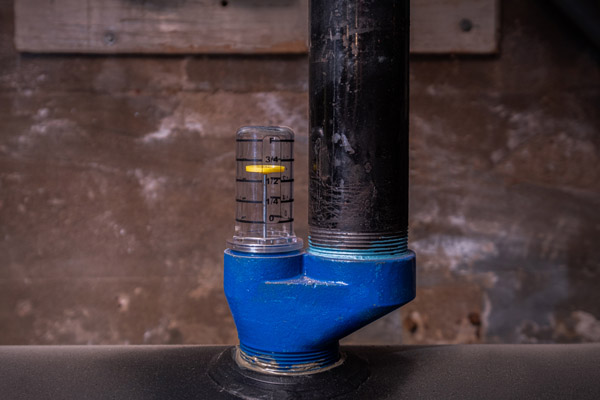
Your budget may be keeping you from enrolling in an automatic delivery service or buying a monitoring system, but you should still conduct oil checks to ensure it does not run out. Experts do not recommend you self-monitor your oil levels, but you can do this as a last resort. You can manually evaluate the gauge and call your oil supplier when there are low oil levels.
Use a dipstick to learn your tank’s oil level. Call your oil supplier and schedule a refill before it reaches 1/4 full. You have to ensure that the oil level never drops below 1/4 full, so you can avoid running out of fuel or damaging your tank.
Pros of Manual Oil Monitoring
- Manual oil monitoring is the most economical option at first. However, you eventually pay more, particularly if you forget to monitor your oil levels year-round.
Cons of Manual Oil Monitoring
- Even highly diligent homeowners can forget their heating oil, especially amidst the hustle and bustle of the holiday season. Most prevention methods notify you when oil levels are low, but manual monitoring means you have to check it frequently on your own. Failing to check your tank means you may require an emergency fill-up and expensive repairs.
- This monitoring method is the most inconvenient out of all the options, especially if your tank is located outside. You wouldn’t want to stand out during the coldest days of winter and check your oil tank.
What You Should Do If You Run Out of Oil
These preventative measures cannot refill your tank if your tank already ran out of oil. You should take immediate action to ensure your home heating comes back while taking steps to avoid this problem from cropping up again in the future.
Here is a guide on what you can do if you find your oil tank completely empty:
- Order an emergency delivery service: Emergency fill-up services provide the much-needed refill in less than a day of your order.
- Heat your home with a substitute: You can use diesel fuel or kerosene to power your heating system until the emergency delivery services arrive. Bring a gasoline-safe and properly labeled container to a nearby gas station and fill it with 5 to 10 gallons of fuel. You can also use a fireplace or other space heaters instead.
- Insulate your surroundings: Ensure that heat stays inside your home while you wait for your oil delivery. Close all doors and windows tightly. Insulate using weatherstripping when possible as well. This way, heat loss is minimized.
Call R.F. Ohl For Fast & Affordable Heating Oil Deliveries

R.F. Ohl is a reliable HVAC company and heating oil supplier. We offer the most competitive heating oil prices in the region, and our deliveries are always completed in a timely and efficient manner. We offer many different delivery plans and financing options so that you can customize your heating oil deliveries to fit your needs. In addition, we employ only experienced, licensed HVAC technicians to complete any necessary heating tune-ups and repairs so that you can reduce your overall energy costs.
At R.F. Ohl, we provide state-of-the-art HVAC repairs, replacements, tune-ups, and installations. Our professionals have the knowledge and experience to offer you practical and reasonably priced solutions for all your home comfort needs. Click the link to view our service area.
Contact R.F. Ohl as soon as possible, and we will be happy to schedule a complimentary, in-home estimate of your HVAC system. Likewise, call us today to find out more about our fuel deliveries.
Click here to contact us today or give us a call at (610) 377-1098 if you have any questions.